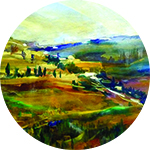Yearning and Unity

What is it about our fleeting Yom Kippur teshuvah that invokes a zechus to be forgiven?

The Shabbos of all Shabbosos is here.
It’s an annual gift from the Eibeshter that even though every year we make promises to improve and often fail to come through on them, He’s still “rotzeh bi’seshuvah,” He still wants our teshuvah.
Imagine, says Rav Nosson Meir Wachtfogel, a wealthy man regularly approached by fundraisers and meshulachim. What would happen if he began making empty promises, if he pledged $1,000, but only provided a check for $60? People would give up on him. The lines outside his house would dwindle, then disappear.
Our avodah is, of course, to make our teshuvah long lasting. But the moment Hashem sees the sincerity in our hearts on Yom Kippur, He forgives us, knowing all the while that we’re human and our resolutions might not last.
The Power of the Day
“Why does Hashem offer us the chance to do teshuvah, year after year, until 120?” Rav Wachtfogel asks. “Why does He trust us? Why does He forgive us every time?”
What is it about our fleeting Yom Kippur teshuvah that invokes a zechus to be forgiven?
It’s the itzumo shel yom, the unfathomable strength inherent in this day. Sifsei Chaim quotes the Ramchal in Daas Tevunos, who explains that Hashem’s intention in creating this world is to highlight “Yichudo shel HaKadosh Baruch Hu b’olamo — the absolute Oneness of Hashem in His World.”
The world runs according to a system of “mishpat — justice.” Kedushah is increased by the mitzvos we perform and diminished by the aveiros we do. This reality is imbedded in Creation and has played out since Adam and Chavah took that very first bite of fruit from the Eitz Hadaas Tov V’ra.
“Who said things should fall down toward the earth?” Rav Avigdor Miller asks. “Maybe they should be repelled by the earth? Maybe big objects should cause small objects to fly away from them… All the things that seem to us acceptable and natural because that’s how Hashem decreed that... there’s no such thing as a natural process. It’s Hashem Who’s doing everything.” (Commentary to Chovos Halevavos, p.156-57.)
Yet the koach of Yichud, Hashem’s Oneness, means all is determined by His will. It’s He Who created the rules of nature, and it’s His will to bring us kapparah on Yom Kippur. Hashem isn’t required to follow the rules of mishpat — He made them. He’s completely free to forgive us at any time! It’s why our recognition of His Yichud is so central to our expiation.
Rav Dovid Kronglass (Sichos Chochmah U’mussar, Ki Bayom Hazeh Yechaper) writes extensively about the two goats that were part of the seder ha’avodah of Yom Kippur. They’re called “sa’ir l’Hashem” and the “sa’ir la’Azazel,” the first being brought as a korban, and the second pushed off the cliff as a kapparah for Am Yisrael.
Once these two goats were sacrificed, the people knew they’d been granted forgiveness. Each year, all eyes waited for the Kohein Gadol to emerge from the Kodesh Hakodoshim and announce that the sa’ir la’Azazel had been cast away.
The Achdus Connection
It sounds like by virtue of the goats alone, Bnei Yisrael’s slates were cleaned. But how could this forgiveness be granted without them doing teshuvah?
To answer the question, let’s look at Succos, the Yom Tov on the heels of Yom Kippur. Each of the arba minim represents a different type of Jew. Vayikra Rabbah asks, “What does Hashem do [with all types of Klal Yisrael]? Let them be tied together, into an agudah achas [one unit], and they atone for one another.”
The esrog (a fruit that has both a taste and a smell) represents a subgroup Mesilas Yesharim brands as “chassidim,” the most pious. Rav Kronglass points out that Mesilas Yesharim directs chassidim to daven to bring kapparah to all of Klal Yisrael.
Ideally, we all should be davening for one another. We should also strive to be “sho’afim” and acutely yearn to come close to Hashem. We have no illusions as to our imperfections, but are able to bask in the knowledge that if we join together, then despite our level of yearning for dveikus or lack thereof, we can still achieve kapparah.
Concluding Rav Kronglass’s thoughts with my own, the key to being forgiven is yearning to come close to Hashem (V’atem hadveikim b’Hashem Elokeichem, chayim kulchem hayom,” Devarim 4:4), but to open the door with that key, we need achdus.
As Individuals, As a Nation
We stand before Hashem as part of a flock, but He counts us one at a time.
Each year, as the words of Rabi Amnon of Mainz echo across our shuls, I picture myself, my loved ones, and all of Klal Yisrael passing under the Eibeshter’s staff, single file, judged with complete transparency.
The sincerity of the cry of “teshuvah, tefillah, u’tzedakah,” is what can pierce through the strictness of Yom Hadin. It’s then that the Baal Rachamim chooses to forgive us.
Rav Dessler describes the profound magic of teshuvah with a graphic mashal describing sin: Imagine grabbing hold of the king’s head and rubbing his face in muck and refuse. Yet “show Hashem your hidden spark of emes that will never be destroyed but has been pushed far behind” (Rav Dessler, ibid), and He’ll wipe away the dirt.
Our Melech comes to us on Rosh Hashanah sitting on the Kisei Ram V’nisa. And yet, the Midrash in Acharei Mos teaches us that He lives with us in “tamei” times and dirty places.
Rav Dessler describes the avodah of Yom Kippur as a complete detachment from the physical distractions of day-to-day life. We human beings strive for 26 hours to achieve the purity of malachim, totally dependent on and yearning to be close to our Creator.
As Rabi Akiva says in Yoma 8:9: “How fortunate are you, Yisrael! Before whom do you become pure and Who purifies you? Your Father in Heaven!” Feel Him, see Him, know Him — the one and only Avichem Shebashamayim!
Rebbetzin Aviva Feiner is the rebbetzin of Far Rockaway’s Congregation Kneseth Israel (The White Shul) as well as a mechaneches in TAG and a visiting lecturer at Stern College.
(Originally featured in Family First, Issue 812)
Oops! We could not locate your form.






